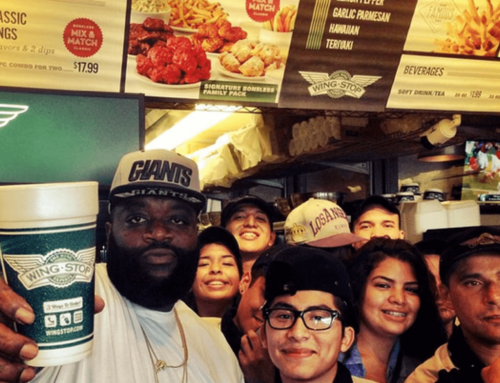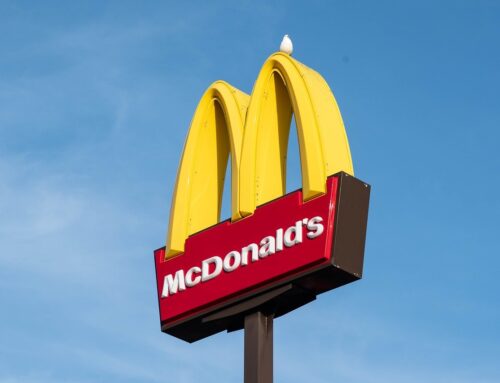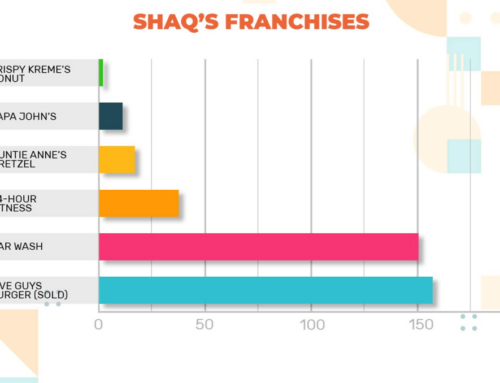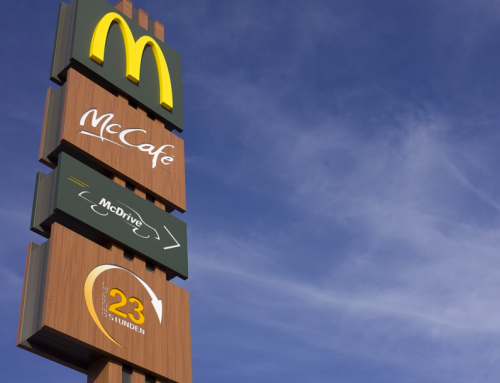While Shake Shack is unavailable for franchising as of 2023, the company offers licensing and real estate deals to grow its footprint. This local favorite, once centered exclusively in Madison Square Park in New York, now has locations internationally and across several states with more than 400 total units at the time of writing.
Although franchising this restaurant is off the table, Shake Shack offers to license and supply chain deals to qualified investors and is also a publicly traded company. Here, I discuss Shake Shack’s history, the source of the company’s success, and what to expect when partnering with this fast-casual dining franchise. If you want to open business that does franchise, take our 8-minute quiz here.
Learn About Shake Shack
Shake Shack Facts
| Year Founded: | 2001 |
| Total Units: | Over 400 |
| Industry: | Food and Beverage |
Shake Shack started as a hot dog cart in Madison Square Park, New York, in 2001, intending to fund a local art project. The cart’s popularity grew, as did the company. So in 2004, Shake Shack got a permanent location in the same park where it began. The company has grown to over 400 locations as of 2023 with 262 restaurants in the United States and 140 international locations.
While Shake Shack started as a hotdog cart, its menu has grown to include shakes, burgers, and more. Their food is standard fast food fare, including chicken nuggets and crinkle-cut fries. Its custom shakes set its menu apart from chains like McDonald’s and Burger King, and its soda floats are unique compared to other similar shake chains.

IC Photo Credit: @LondonEatingSpots
By promoting high-quality ingredients without additives, its small menu continues to attract big customers. While its menu is standard for the industry, its atmosphere leans toward artistic and clean, focusing on sustainable practices and supply chain transparency as part of its brand identity.
In 2022, Shake Shack planned to add drive-thru options to 25% of its restaurants and open several new locations. While these plans were somewhat complicated by supply issues and labor shortages, the company continues to update and expand its existing sites to serve its customers better and plans to open another 40 restaurants in 2023.
While most of Shake Shack’s US locations are corporate-owned and run, it offers exclusive licensing agreements in the following countries:
- Bahrain
- China
- Egypt
- Japan
- Jordan
- Kuwait
- Kingdom of Saudi Arabia
- Lebanon
- Mexico
- Oman
- Philippines
- Qatar
- Singapore
- South Korea
- Turkey
- United Arab Emirates
- United Kingdom
What Makes Shake Shack Successful?
Shake Shack uses a unique strategy for planning future business locations. By targeting critical real estate locations and working with local architecture styles, this brand comes out the gate looking like it belongs wherever it starts a location. In addition, unlike other companies that offer franchise opportunities, Shake Shack directly calls for real estate investors on its website.
By melding in with the surrounding area, these burger joints avoid the flashy appearance of some other fast food chains. Its real estate must-haves include corner lots or access to significant thruways and outdoor seating to elevate their dining experience. In addition, the company recently emphasized parking spaces to allow for digital order pickups, a popular aspect of many modern fast-casual dining restaurants.
Another aspect of this company’s success is its simple menu emphasizing healthy, ethically sourced ingredients. While no one claims that burgers, shakes, and fries are a healthy meal choice, by putting care into their ingredient list and putting forward the image of a cleaner dining experience, Shake Shack set its menu apart from the rest of the well-known burger joints, earning it a dedicated following.
Notably, due to this company’s small beginnings, it has garnered something of a loyal fanbase. Though the international nature of this restaurant chain has well surpassed its local beginnings, the restaurant still works off of this loyalty. While its locations far outstrip its first hot dog cart by building its restaurants to fit the area around them and prioritizing high-quality ingredients, Shake Shack has extended that small-restaurant loyalty to its corporate form, leading to significant success.
Is Shake Shack Losing Money?
In a study of Shake Shack’s 2022 profits, while the company ran into labor issues in 2022, the overall profit margin for the company was 17%. In addition, unit sales were up 7.8% from the previous year across the board, indicating a net-positive trend across its locations. Overall, the company estimated positive growth across all its locations in 2023, looking forward to expanding its locations locally and internationally.
Shake Shack is still gaining money as of 2023. While the company did run into financial challenges during the COVID-19 pandemic and the resulting shutdown and labor crisis that followed, steady growth margins indicate that the company is, at the very least, financially stable at this time. Moreover, with development plans including adding drive-thru locations and expanding to foodcourts and urban areas, Shake Shack is far from going under.

Hey ma! Look what I made.
It is worth noting that the company did see slight financial problems in the years following the pandemic and that profit margins are slightly lower than expected for a company this size. However, 2022 margins are the highest since before the pandemic, indicating steady growth. While it’s always best to talk with a financial advisor before investing in a company, Shake Shack is far from losing money and appears to be a stable fast-casual dining company at the time of writing this article.
Are There Alternatives to Shake Shack?
In short, any successful fast-casual burger joint is a viable alternative to Shake Shack. In addition, most fast-casual restaurants that offer direct franchising alternatives are worth looking into if you’re interested in investing in a burger restaurant. Comparable restaurants to Shake Shack include Whataburger and Smashburger, as well as chain-cornerstone restaurants like McDonald’s. These three alternatives offer franchising opportunities and are a direct way to join the fast-casual dining industry.
Related Reading: Is the Total Cost to Open a Raising Cane’s Worth It?
While these restaurants are somewhat comparable to Shake Shack, they have different business models and branding. For example, suppose you’re looking for the ethically sourced ingredients and landscape-conscious company identity innate to Shake Shack. You may be better looking outside the fast-casual burger chain genre of restaurants and, instead, check out smaller-scale restaurants. Similarly, if you’re looking for businesses with licensing agreements instead of full franchise deals, check out MrBeast Burger.
How Much Does It Cost to License a Shake Shack?
Since Shake Shack does not offer licensing opportunities in the United States, finding out the exact cost of licensing this fast-casual dining restaurant is difficult. However, by comparing Shake Shack to similar dining experiences, we can come to a general estimate of how much it costs to license these locations. Remember that these are estimates and that you should review official licensing documents before making any financial decisions.

Burger with a side of fries.
Some franchise experts compare Shake Shack to other burger restaurants, including Whalburger and Whataburger. While these comparisons have downsides, the average cost of starting a fast-casual dining experience is similar across the board. Here, we compare the theoretical industry averages for starting a fast-casual burger restaurant and how they may relate to starting a Shake Shack location.
Once again, Shake Shack has yet to offer franchise options as of 2023. Still, if that opportunity were to open in the future, these are the fees and financial requirements you could expect from the company.
Financial Requirements and Fees
Assuming that the average cost of opening a Shake Shack is comparable to Whataburger or other similar locations, the average investor is looking at a total investment of around $1.2 million. This includes an estimated franchise fee of between $30,000 and $40,000, which is somewhat standard for the industry. Before investing in a franchise, some key things are the overall real estate costs and other investments, such as employee training, signage, and more.
Financial Requirements
| Liquid Capital: | $5,000,000 (estimated) |
| Net Worth: | Unknown |
| Total Investment: | $1.2 million (estimated) |
| Franchise Fee | $30,000 to $40,000 (estimated) |
| Royalty Fee | 4% to 6 % (industry average) |
It is worth noting that Whataburger tends to be on the high side regarding average financial requirements and investments. However, the $1.2 million initial investment is standard for fast-casual dining restaurants.
Any franchise owner must consider other costs besides franchise fees, real estate, and royalty fees. For example, employee training can run up costs, as can mandatory advertising investments, required services like a point of sale (POS) system, and yearly conventions.
It’s imperative to read all information provided by a company before agreeing to its franchise terms to learn all these hidden fees and yearly expenses. But, of course, since Shake Shack does not offer franchise options at this time, any added fees they may require are purely theoretical.
How Much Profit Do Shake Shack Licencees Make Per Year?
Shake Shack boasted a total unaudited revenue of $900.5 million at the end of 2022. While it did not disclose its average unit sales for 2022, the projected average for 2023 is between $2.8 and $3.2 million. But, of course, Shake Shack does not disclose how much its licensees make per year.
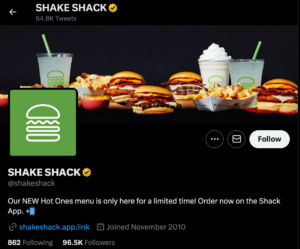
Shake Shack is on Twitter.
The company reported $869.3 million in unit sales revenue and a licensing revenue of $31.2 million. While this accounts for around 4% of its unit sales revenue, it’s worth noting that not all of its restaurants are licensed, meaning this is not a solid licensing fee number for the company.
Average Sales / Revenue per Year
| Systemwide Annual Revenue | $900.5 million |
| Average Annual Sales per Unit | $2.8 million to $3.2 million (projected) |
| Average Licensee Profits | Unknown |
Shake Shack does not report average licensee profits. Franchisee profits for other restaurants vary based on location, age of the restaurant, and overall market costs such as inventory. With this information in mind, it is difficult to estimate what a Shake Shack licensee makes each year accurately.
Related Reading: Will In-N-Out Burger Ever Franchise? (Cost + Startup Process)
However, with an average unit revenue of $2.8 to $3.6 million, if each licensee saw a 10% return on investment, that would put the average licensee profits at between $280,000 to $360,000. This is a reasonably standard profit margin for restaurants in this industry, so it’s a decent estimate to assume that if Shack Shack allowed franchising or reported its licensee profits, the number would be approximately the same.
That would mean that the average theoretical franchise owner would take about four years to recoup their original investment if the projected numbers for a Shake Shack franchise remained accurate. But, of course, since Shake Shack does not offer franchise opportunities at this time, it is advisable to look for another similar restaurant to invest in.
Advantages of Shake Shack
Some of the advantages of Shake Shack include:
- Brand Loyalty: Since Shake Shack started as a small-scale hot dog cart, it holds that same local loyalty regardless of its size, meaning that potential investors can piggyback off brand recognition and loyalty for immediate customers.
- Ethical Ingredient Sourcing: Shake Shack values high-quality ingredients and prioritizes ethical ingredient sourcing as part of its menu. Not only does this reflect well on the company as a whole, but it also guarantees company-run supply lines for licensees, meaning better margins on inventory.
- Architectural Integration: By prioritizing restaurant designs that work with local architecture, Shake Shack crafts unique locations that work with, rather than stand out, against nearby buildings. This adds to the company’s small-scale appearance and helps foster brand loyalty by giving the appearance of a local restaurant.
Challenges of Shake Shack
Unfortunately, there are many challenges associated with Shake Shack:
- No Franchising: Shake Shack has no franchise opportunities and does not seem likely to offer them soon.
- Only International Licensing: Shake Shack only offers international licensing agreements to individuals not located in a long list of countries, making working with Shake Shack difficult.
- Limited Information: Shake Shack has limited information on its existing licensing deals and fees and has little to no information about licensee profits, making it difficult to assess investment costs properly.
Is Shake Shack Right for You?
Overall, Shake Shack does not provide franchise opportunities at this time and does not license restaurants in the United States. While the company was profitable in 2022, without a clear line of investment or clear licensee profit information, investing in the company as a restaurant owner is difficult, if not nearly impossible. I haven’t found any evidence that suggests the company will offer a franchise program in the near future.
If you’re looking for a fast-casual restaurant with clear financial information, take our franchise quiz. From franchise opportunities to licensing opportunities, there are more than a dozen fast-casual burger restaurants are available for investment.

